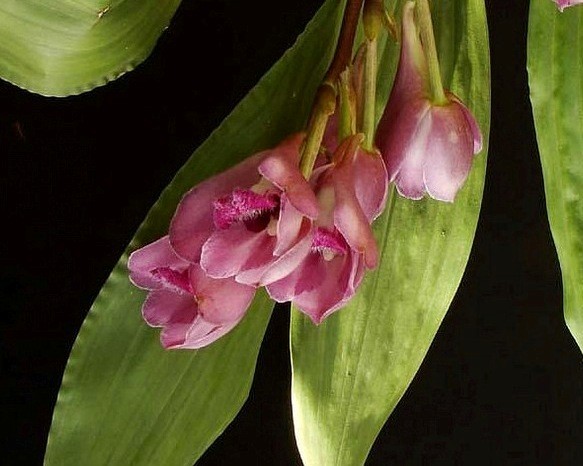Bifrenaria tyrianthina
(Bifrenaria tyrianthina)

Description
Bifrenaria, abbreviated Bif. in horticultural trade, is a genus of plants in family Orchidaceae. It contains 20 species found in Panama, Trinidad and South America. There are no known uses for them, but their abundant, and at first glance artificial, flowers, make them favorites of orchid growers. The genus can be split in two clearly distinct groups:one of highly robust plants with large flowers, that encompass the first species to be classified under the genus Bifrenaria; other of more delicate plants with smaller flowers occasionally classified as Stenocoryne or Adipe. There are two additional species that are normally classified as Bifrenaria, but which molecular analysis indicate to belong to different orchid groups entirely. One is Bifrenaria grandis which is endemic to Bolívia and which is now placed in Lacaena,and Bifrenaria steyermarkii, an inhabitant of the northern Amazon Forest,which does not have an alternative classification. Bifrenaria are generally robust plants, of sympodial growth, between ten and sixty centimeters tall. They are characterized by round-section root with thick velamen, four-angled fleshy pseudobulbs of one internode, often basally protected by dried sheaths and with only one apical leaf (except for Bifrenaria steyermarkii, which occasionally has two), plicate (fan-folded) enervated leathery leaves, yet malleable and not exceedingly thick, with a pseudo-petiole of basal round section, and a basal inflorescences bearing up to ten flowers, which seldom surpass the leaves' length. Bifrenaria flowers are strongly scented, they have sepals slightly larger than the petals, with the lateral ones basally united to the column foot forming a calcar with truncated extremity. The column is slightly arching, generally without wings or any other appendages, bearing a foot which the labellum is hinged to, whose shape varies, articulated to the column, with a longitudinal channeled callus often with a basal claw. Flowers show two elongated stipes, hardy ever one, at least twice longer than wide, with salient viscidium, visible caudicles and retinacle in inverted positions. The superposed pollinia number four, and are protected by a deciduous incumbent anther.Fruits are green, erect or pendulous; they take about eight months to ripe and hold hundreds of thousand yellowish or brownish elongated seeds up to 0.35 mm long.
Taxonomic tree:







